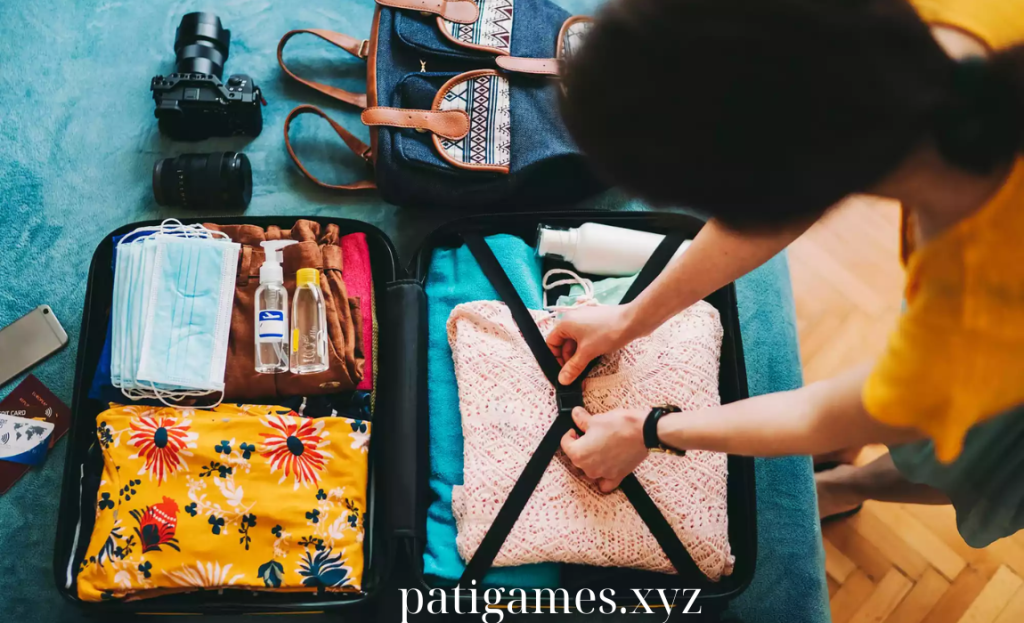Practical Guides
Travel Packing Guides: Smart Strategies for Efficient Packing
Packing for a trip can be one of the most challenging parts of travel preparation, especially if you’re trying to fit everything you need into limited luggage space. Whether you’re heading on a weekend getaway or a long-term adventure, efficient packing is essential for a stress-free travel experience. By organizing your essentials strategically and minimizing unnecessary items, you can streamline the packing process and make your journey smoother.
Here are some smart strategies for efficient packing to help you stay organized and travel lighter.
1. Make a Packing List: Start with Essentials
One of the best ways to ensure efficient packing is by creating a packing list. This allows you to visualize what you truly need for your trip and avoid overpacking. Break your list into categories such as clothing, toiletries, electronics, and documents. Start with the essentials, including:
- Travel Documents: Passport, visa, tickets, and ID.
- Toiletries: Toothbrush, toothpaste, deodorant, and any prescribed medications.
- Electronics: Phone, chargers, and any travel adapters you may need.
- Clothing: Items appropriate for the destination’s weather and planned activities.
By using a checklist, you ensure that nothing is left behind while avoiding packing unnecessary items.
2. Choose Versatile Clothing: Pack Smart, Pack Light
When it comes to packing clothing, the key is versatility. Choose pieces that can be easily mixed and matched, allowing you to create multiple outfits from just a few items. Neutral colors like black, white, gray, and navy work well for this, as they can be paired with different accessories to change the look.
Additionally, think about layering. Lightweight layers like cardigans, scarves, and jackets can help you adapt to different weather conditions without taking up too much space. Avoid packing bulky items unless absolutely necessary, and choose fabrics that are wrinkle-resistant and easy to wash if you’re on a longer trip.
3. Use Packing Cubes: Stay Organized
Packing cubes are a traveler’s best friend when it comes to organization and space efficiency. These small, zippered bags allow you to compartmentalize your clothing and accessories, making it easier to find what you need without rummaging through your entire suitcase. Use different cubes for different categories—one for tops, one for bottoms, another for undergarments, and so on.
Not only do packing cubes keep your suitcase neat, but they also help compress your clothes, saving valuable space. If you’re traveling to multiple destinations, you can even pack outfits for different legs of your trip in separate cubes for easy access.
4. Roll, Don’t Fold: Maximize Space
Rolling your clothes instead of folding them is a proven packing strategy that helps save space and reduces wrinkles. This method works especially well for lightweight fabrics like T-shirts, pants, and dresses. Heavier items like jeans and jackets can be folded and placed at the bottom of your luggage to create a solid base.
To maximize space further, roll smaller items like socks and undergarments and tuck them into the gaps between larger items or into your shoes. This method not only conserves space but also makes it easier to keep everything organized and accessible.
5. Minimize Toiletries: Opt for Travel Sizes
When it comes to toiletries, less is more. Most hotels and accommodations provide basic toiletries like shampoo, conditioner, and soap, so there’s no need to pack full-sized bottles. Instead, opt for travel-sized versions of your essentials, or use refillable travel containers for your favorite products. Many travel containers are leak-proof and meet TSA liquid regulations, making them perfect for carry-on bags.
If you’re going on a long trip, consider buying toiletries at your destination to save space and weight in your luggage. Additionally, packing items like a microfiber towel (which is compact and quick-drying) can be a space-saving alternative to traditional towels.
6. Limit Shoes: Choose Multi-Purpose Footwear
Shoes are often the bulkiest items in your suitcase, so it’s important to pack wisely. Limit yourself to two or three pairs of shoes—one comfortable pair for walking, one versatile pair for dressier occasions, and one pair of sandals or casual shoes if necessary. Choose footwear that is lightweight, comfortable, and suitable for multiple activities.
Pack shoes at the bottom of your suitcase or along the sides to save space. To prevent shoes from dirtying your clothes, place them in shoe bags or reusable cloth bags. Additionally, you can fill shoes with small items like socks or accessories to maximize every inch of space.
7. Utilize Your Personal Item: Maximize Carry-On Space
Most airlines allow passengers to bring a personal item in addition to their carry-on bag. Take full advantage of this by choosing a personal item that is spacious and functional, such as a large tote, backpack, or duffel bag. Use this extra space for items you’ll need during the flight, such as a book, snacks, headphones, and any essential medications.
Additionally, if your carry-on is packed to capacity, you can store extra clothes, electronics, or a jacket in your personal item. Just be sure to check the airline’s size and weight restrictions for personal items to avoid any issues at check-in.
8. Plan for the Return: Leave Room for Souvenirs
It’s easy to forget about the return trip when packing for your travels, but it’s important to leave some extra space in your luggage for souvenirs, gifts, or any items you may purchase during your trip. If you’re a frequent shopper, consider packing a foldable tote or duffel bag that can easily expand to accommodate new items on your way back home.
Another strategy is to pack older clothing or shoes that you can leave behind if necessary. This gives you more room for new purchases and helps lighten your load for the return trip.
9. Keep Important Items in Your Carry-On
No matter how carefully you pack, there’s always a chance that your checked luggage could be delayed or lost. To prepare for this possibility, make sure to keep essential items in your carry-on, including:
- Travel documents and ID: Passport, boarding pass, and any necessary visas.
- Medications: Any prescriptions or over-the-counter medicines you may need during your trip.
- Valuables: Electronics, jewelry, and other valuable or fragile items.
- A change of clothes: In case your checked luggage is delayed.
Having these important items with you ensures that you’ll have everything you need to manage the first few days of your trip, even if your luggage doesn’t arrive on time.
10. Adapt Your Packing to the Destination and Trip Length
The duration of your trip and your destination’s climate will heavily influence your packing strategy. For shorter trips, packing light with a carry-on may be all you need, while longer trips may require a checked bag and more comprehensive packing. If you’re traveling to multiple destinations with varying climates, pack layers that you can add or remove as needed, and consider using laundry services to reduce the amount of clothing you need to bring.
For specific activities, such as hiking, swimming, or attending formal events, make sure you pack appropriately without overdoing it. Only bring what you know you’ll need, and opt for multi-purpose items whenever possible.
Conclusion
Packing efficiently is an art that requires a bit of planning and strategy, but with the right approach, you can minimize stress and maximize your travel experience. By following these smart packing strategies, you’ll be able to streamline your packing process, avoid overpacking, and enjoy your trip with everything you need at your fingertips.
From using packing cubes to choosing versatile clothing, these tips ensure that your suitcase stays organized, light, and ready for any adventure. Happy travels!

